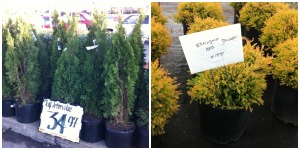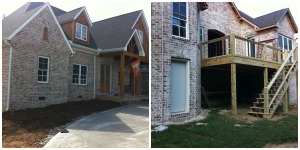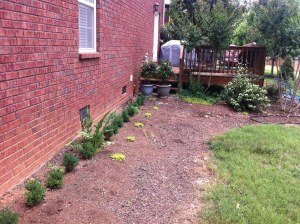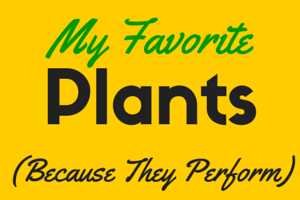Now that you have a working design and budget, it’s time to shop!
Buying Plants comes down to three things. Price, selection, and time.
Price – Save the Most Money
Trees, shrubs, edibles, and flowers are priced based on their age. The older, the more valuable. The most expensive plants are usually the oldest and largest. Japanese maples and boxwoods cost more compared to similar size and age plants because they grow more slowly. You will always pay a premium for slow growing plants. You’re paying for time!
To save the most money, find a wholesale source for your most common varieties. Google wholesale nursery near “your town and state”. Call them and see if they sell to the public. Some wholesalers charge a minimum order so figure out your design first, then you’ll know what you need.
If the wholesale nursery has a price list, catalog, or inventory with prices on the website, they’ll sell direct to you. Call them if you like the price and see if you can pickup or have delivered. Pickup is going to be less expensive, always.
If you can’t find anything or the wholesalers won’t sell direct, save money by shopping the box stores first. The most common box stores are Lowe’s and Home Depot. Depot usually has better quality material, but it can be pricier.
If the garden center has multiple sizes of the same variety, buy the smallest size container. It will grow and appreciate, turning a $5 shrubs into a $50 plant into a $500-5,000 specimen.
Treat your landscape like the investment it rightfully is! Your landscape appreciate at 9% over the life of your homeownership (click here to scientific journal article).
Time – Save Years of Frustration
To save the most time and skip buying a potentially weaker plant, shop your local garden center. Call ahead if you’re just looking for one plant.
You’re usually going to pay more from a local garden center but 99/100 times, the local garden center has better, healthier plants. So you pay for what you get. This is more true in live goods than other kind of product. Low price live goods (plants) must be grown with cheaper inputs or be younger. Local garden centers purchase from smaller, family owned nurseries and national brands, so their plant material is superior.
If you need to save money, buy fewer plants and space them farther apart. It’s ok for gaps between shrubs. When I view properly spaced plants, I know an intelligent designer and/or homeowner did their homework about plant spacing.
If you’re just looking for a single specimen, start at your local (independent) garden center. The bigger and older the plant, the more expensive it’s going to be.
If you’re shopping for edible plants, check out the local garden center or farmer’s co-op in your area. They have the best selection and the price is reasonable. You’re saving so much money growing your own food! For more on growing and landscaping with edibles click here.
Selection – Save Time and Money
Garden centers always have superior selection to Lowe’s and Depot. Call or check the local garden center website for specific varieties. If they don’t have what you’re looking for, they will know where to get it.
Local garden center employees have great knowledge and may have a replacement for you if unable to source the variety.
Spring offers best availability of trees, shrubs, and flowers. Cool season edibles are best found in the Fall. Click here for help deciding when to install.
Ebook
I go into more detail regarding exact plant prices in my ebook 7 Steps to Landscape Success.
In addition to design and install, I can help you find wholesale priced plant material! Call or email me elliott@mylandscapeguide.com to get started!
Now it’s on to Step 5, Site Prep and Install!







